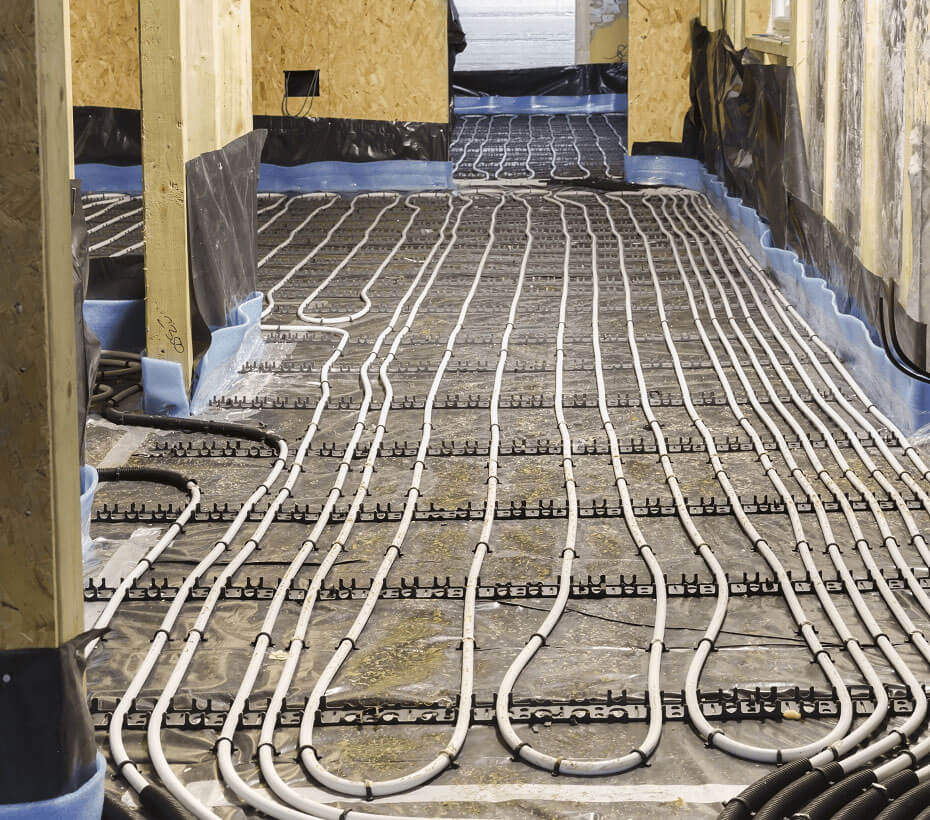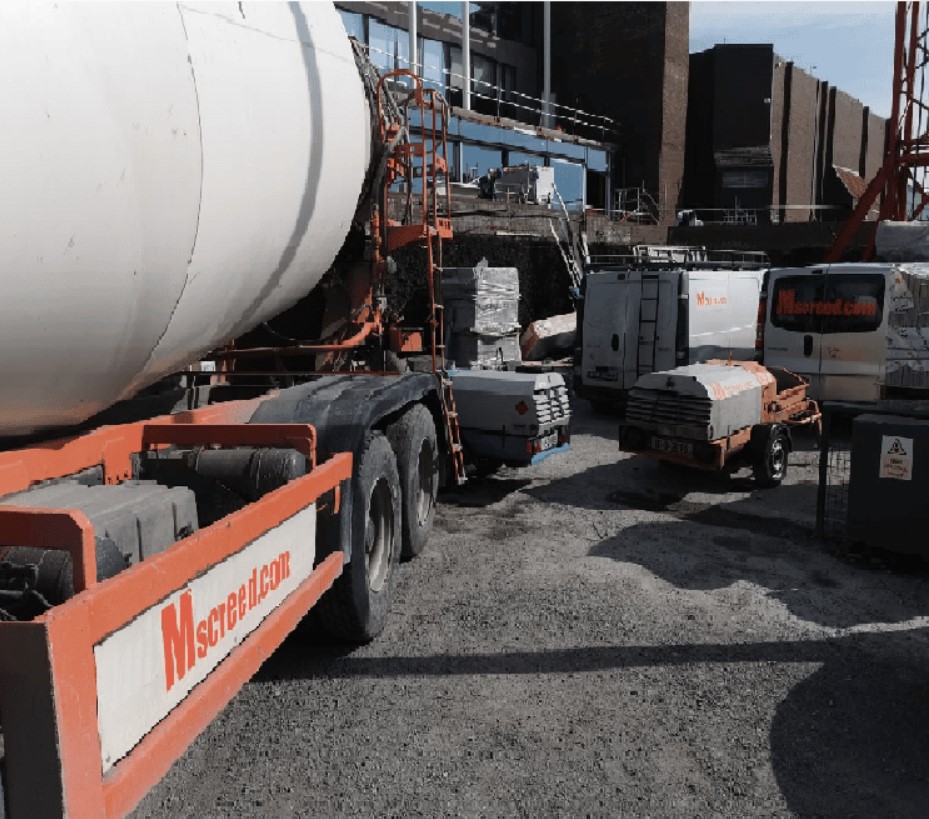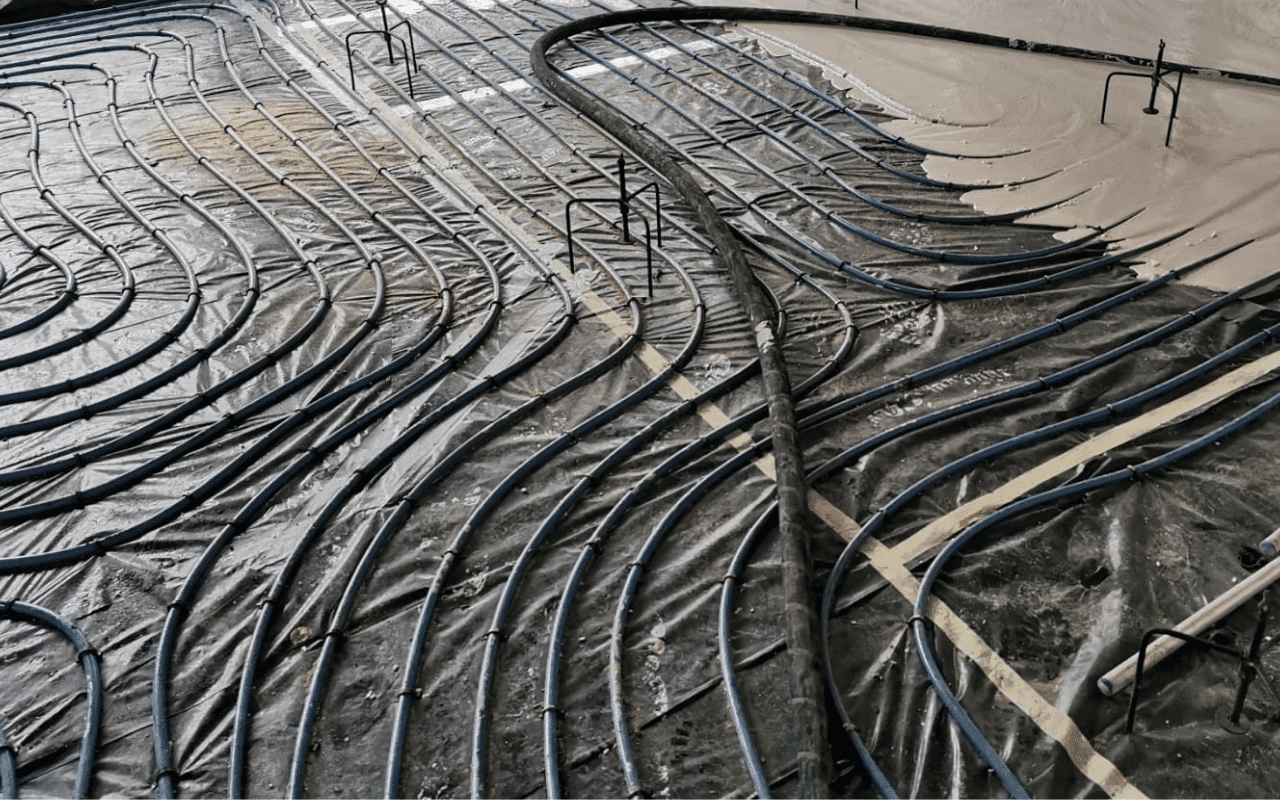HomeOur ServicesUnderfloor Heating
Underfloor Heating

Underfloor Heating Service: Efficient, Comfortable, and Reliable Solutions
Welcome to our Mscreed’s Underfloor Heating service in Dublin! With over 25 years of experience, we take pride in providing top-quality solutions for all your underfloor heating needs. Our services are fully licensed, bonded, and insured, ensuring you can trust us with your project.
- Energy-Efficient & Cost-Effective Faster installation and faster drying times at recommended depths.
- It Gets Warm and Quick Foot traffic within 24-48 hours.
- Safety and Comfort Higher strength than sand and cement screeds, requiring no reinforcement.
- More Space & Design Freedom Our screed can be used on timber, Garage, and high-foot traffic areas.
Embrace Comfort & Efficiency: Underfloor Heating in Dublin
Underfloor heating service is an efficient, affordable way to add warmth and comfort to any room in your home. This innovative heating system works by circulating warm air through ducts underneath the floor, creating a pleasant environment without the need for bulky radiators or costly energy bills.
Discover everything you need to know about installing Underfloor heating in Dublin, benefits, and maintenance in this comprehensive guide.
How Does Underfloor Heating in Dublin Work?
The key to understanding the benefits of underfloor heating lies in how it works.
To enable heat transfer, a closed loop of pipes is fitted into the subfloor or substrate with a heat source - this can be heated water or warm air. Heat is distributed evenly and gently throughout the room through these pipes, creating a comfortable and efficient environment that provides an even temperature.
There are two primary types of underfloor heating systems, hydronic and electric. A hydronic system circulates hot water through pipelines underneath the floor, while an electric one uses electric elements that extend into the floor. The choice of system depends on factors such as the size and shape of the room and whether you’re looking for zone control or a more centralised heating option.
Whichever option you choose, both offer exceptional energy efficiency with improved temperature control compared to traditional radiators and convection heaters.

The Advantages of Underfloor Heating
- Increased Comfort And Convenience: Our underfloor heating service enhances the overall comfort of your home by providing even and gentle heat distribution.
- Energy Cost Savings: Due to efficient heat transfer, underfloor heating allows you to maintain a warm home at a lower temperature, resulting in potential savings of 20-40% on utility bills.
- Discreet And Space-Saving: With underfloor heating, there is no need for bulky radiators, freeing up wall space and offering a more visually appealing and seamless interior design.
- Safety And Comfort: Underfloor heating eliminates the risk of hot surfaces, making the floors comfortable and reducing air allergens.
- Energy Efficiency In Summer: Underfloor heating can also help reduce energy costs and prevent condensation issues during summer.
- Increased Property Value: Installing underfloor heating in Dublin can enhance the value of your property, making it more attractive to potential buyers.
- Wireless Thermostat Control: A wireless thermostat control system allows you to conveniently monitor and adjust temperatures remotely through an app, providing added convenience and potential energy savings.
Customisable Temperature Scheduling: With wireless thermostat control, you can schedule temperature changes based on occupancy, optimising energy usage in each house.
Evaluating Your Options for Installing Underfloor Heating
Once you’ve decided to invest in underfloor heating, you must evaluate your options and decide what type of system and materials will work best for your home. There are two main types of systems:
- Electrical Underfloor Heating
- Water-based Underfloor Heating
Below are some key considerations to evaluate which kind of Underfloor Heating is best for you in Dublin:
- Research each option and choose the most efficient and cost-effective.
- Additionally, consider the flooring material you want to use – some materials, like tile or stone, conduct heat better than others, like wood or laminates.
- Weigh the pros and cons of each choice to determine which is right for you.
- Before you start installing underfloor hea, take the time to research different system options and determine the best installation method for your home.
- Consider how warm you want or need it to be and what energy sources are most available and affordable where you live.
- The materials in your flooring affect the heating system’s efficiency, so invest in quality products recommended for use with your chosen system.
- Ultimately, evaluating your options for Underfloor Heating services in Dublin will help you choose a reliable and cost-effective solution that’s just right for your home and lifestyle.
Maintenance & Troubleshooting Tips for Underfloor Heating Systems in Dublin
Maintenance Tips:
- Regularly inspect your underfloor heating system to ensure it functions properly.
- Schedule routine cleaning and maintenance to keep the system running smoothly.
- Clean or replace filters to prevent dirt and debris from clogging the system.
- Clean the ducts where steam can get trapped to ensure proper heat distribution.
- Use a reliable brand of water treatment product, such as those containing sodium sulfate or ammonium, to prevent corrosion and sediment build-up.
- Have an expert check for any signs of corrosion, sediment build-up, or wear and tear.
Troubleshooting Tips:
- Uneven temperatures between different rooms may indicate a problem. Check for any blockages or airlocks in the system.
- Unexplained changes in heating bills could be a sign of an issue. Inspect the system for any leaks or inefficiencies.
- Clattering sounds within the pipes may indicate trapped air or debris. Bleed the system or have it flushed to remove any blockages.
- If you notice reduced heat output or no heat, check for blocked or damaged pipes.
- Leaking valves should be repaired or replaced to prevent further damage to the system.
- If you are unsure about any maintenance or troubleshooting tasks, consult a professional to avoid causing further damage or voiding warranties.
Remember, proper maintenance and timely troubleshooting are crucial for keeping your underfloor heating system in good working condition and maximising efficiency.
Affordability & Energy Efficiency Of Installing Underfloor Heating Systems In Dublin
Underfloor heating systems offer several advantages, including cost savings and energy efficiency. When considering installing an underfloor heating system in Dublin or any other location, evaluating the cost and energy efficiency aspects is essential to make an informed decision.
Cost Considerations
- Installation Expenses: Underfloor heating systems generally require a higher upfront investment than traditional heating systems. The cost varies depending on the type of system chosen, such as electric or hydronic, and the size of the area to be heated.
- System Type: Electric underfloor heating systems are more cost-effective for smaller spaces or specific rooms due to their more straightforward installation requirements. Hydronic systems, which use hot water circulated through pipes, may be more expensive due to the need for additional plumbing and professional installation.
- Energy Savings: Although the initial investment may be higher, underfloor heating systems can lead to long-term energy savings. These systems operate at lower temperatures than conventional heating systems, which reduces energy consumption and lowers utility bills over time.
Energy Efficiency Considerations
- Heat Distribution: Underfloor heating provides radiant heat evenly across the entire floor, resulting in efficient heat distribution throughout the room. This reduces the need for additional heat sources and minimises heat loss.
- Zone Control: Underfloor heating systems offer the flexibility of individual room or zone control. This allows you to adjust the temperature in different areas according to usage, optimising energy usage and avoiding heating unoccupied spaces.
- Thermal Efficiency: Radiant heat warms objects and people directly, creating a comfortable and energy-efficient environment. The heat stays closer to the floor, reducing heat loss through walls and ceilings. This results in a more efficient heating process compared to forced-air systems.
While underfloor heating systems involve a higher initial cost, they offer long-term energy savings and increased comfort. Factors such as system type, installation expenses, and energy efficiency should be carefully considered when deciding on the best underfloor heating solution for your home in Dublin or any other location.
Consult our professionals for underfloor heating service today. You’ll get further guidance based on your specific needs and budget.



